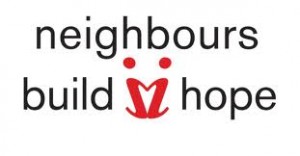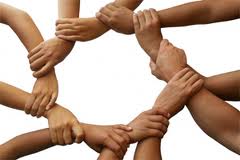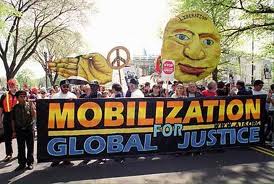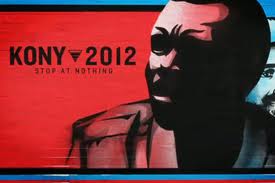 I’m a guy who likes to sift through all the information we get thrown at us everyday, and distill things down to a few key ideas that are like signposts pointing me in the right direction for how I should spend my time, energy, and money. These themes have been rising to the surface again and again in my conversations, the music I listen to – or my kids listen to, the social media banter, the books, magazines, and papers I read, the movies I watch, or in the reoccuring thoughts that percolate in my mind as I stop and reflect.
I’m a guy who likes to sift through all the information we get thrown at us everyday, and distill things down to a few key ideas that are like signposts pointing me in the right direction for how I should spend my time, energy, and money. These themes have been rising to the surface again and again in my conversations, the music I listen to – or my kids listen to, the social media banter, the books, magazines, and papers I read, the movies I watch, or in the reoccuring thoughts that percolate in my mind as I stop and reflect.
These trending threads help me map out my priorities for the next year and beyond. They are like clues to what God might be up to, and where His life and activity might be found! That’s where I want to be found.
year and beyond. They are like clues to what God might be up to, and where His life and activity might be found! That’s where I want to be found.
The fact of the matter is that these themes are not that avant garde. They are old ideas that transcend time because they are God ideas that work whether you believe in God or not!
These trending themes are growing into grassroots movements as more and more people start to repattern their lives one by one, and live these ideas.
This list is by no means exhaustive, but I think these ideas may resonate with what you may have been feeling, thinking, and hearing like a tuning fork ringing true inside of you. By living these ideas, you and I can be part of joining organic movements changing the world one person at a time. Pretty amazing!
1. Dive into Neighbouring and Community Transformation:
The Word became flesh and blood, and moved into the neighbourhood.” John 1:14
This idea of neighbouring has been popping up wherever I turn. From the front page of a Macleans magazine, the August 18, 2014 edition, entitled Stop Ingnoring Your Neighbours; to books on the art of neighbouring; to the upcoming World Vision leaders forum for church leaders going across Canada in 2015 entitled Neigbourhood Mapping – www.churches.worldvision.ca (come out to the heart and soul forum for leaders on April 8 in Calgary); to church planting experiments bubbling up such as the Parish Collective. There is something exciting going on that I want to be a part of.
From the front page of a Macleans magazine, the August 18, 2014 edition, entitled Stop Ingnoring Your Neighbours; to books on the art of neighbouring; to the upcoming World Vision leaders forum for church leaders going across Canada in 2015 entitled Neigbourhood Mapping – www.churches.worldvision.ca (come out to the heart and soul forum for leaders on April 8 in Calgary); to church planting experiments bubbling up such as the Parish Collective. There is something exciting going on that I want to be a part of.
The longing to belong, to simplify one’s life, to put down roots, and to work together to find solutions to the problems of crime, poverty, and loneliness right where we live is igniting a grassroots movement.
Folks are falling in love with their neighborhoods, and digging in for the long haul to see their neighborhoods transformed into places of beauty, harmony, and abundance. “
Without great fanfare, people are serving their neighborhoods in ordinary ways with extra-ordinary results. There is a ground swell of normal folks joining and volunteering in community associations, coaching sports in their neighborhood, putting on block parties, and renovating the homes of those who can’t afford it. Neighbours are becoming friends and getting involved in each other’s lives.
ordinary ways with extra-ordinary results. There is a ground swell of normal folks joining and volunteering in community associations, coaching sports in their neighborhood, putting on block parties, and renovating the homes of those who can’t afford it. Neighbours are becoming friends and getting involved in each other’s lives.
Folks are choosing to shop in their neighborhood, work and start businessess in their neighborhood even when its not as financially lucrative. People are working together to find solutions to what ever ills plague their neighborhood with the aim of making their hood the best place to live.
Churches are calling their parishioners to move into the neighbourhood where they meet, and become part of the fabric of that hood!
This journey of transformation is happening in my neighbourhood of Bowness and I love it. There is no other place I would rather live in our city of Calgary. This last Christmas I watched volunteers from our hood, both church and folks who don’t go to church, put on a meal for about 400 neighbours including the elderly and less fortunate or lonely. What an awesome place to live.
This idea of community transformation is also impacting how we get involved in the developing world. Rather than simply throwing money at the problem, we are becoming friends with communities living in poverty, and walking with them to find local solutions that will provide clean water and sanitation, health care, food, education for the children, and jobs through micro-enterprises. Communities are overcoming poverty and having their dignity restored as they become transformed in everyway.
How could you offer up your gifts and abilities to serve and love your neighbourhood? Do you know your neighbour by name, and have you ever had them in your home for a meal or coffee? Get your church involved with World Vision and adopt a community in the developing world. www.churches.worldvision.ca/gpo
2. Start Partnering and Sharing:
“The whole congregation of beleivers was united as one-one heart, one mind! They didn’t even claim ownership of their own possessions. No one said, ‘That’s mine; you can’t have it.” Acts 4:32
 All around us we seeing the growing trend of sharing demonstrated through enterprises such as community gardens, car sharing, couch surfing, churches sharing buildings, or businesses sharing knowledge such as in the case of finding a vaccine for Ebola. The idea that we can do it on our own, and that it is better to compete than collaborate is proving to be a bankrupt idea in all arenas of life. The silo mentality of hoarding and not sharing has been found wanting.
All around us we seeing the growing trend of sharing demonstrated through enterprises such as community gardens, car sharing, couch surfing, churches sharing buildings, or businesses sharing knowledge such as in the case of finding a vaccine for Ebola. The idea that we can do it on our own, and that it is better to compete than collaborate is proving to be a bankrupt idea in all arenas of life. The silo mentality of hoarding and not sharing has been found wanting.
Investing in the slow journey of building trust in relationships between people in teams, between departments in businesses, and between churches so that we gladly share our resources of knowledge, time, money, and people with each other is the key to real partnering and sharing.
I am starting to see large churches partnering and sharing resources with small organic missional communities with no strings attached. I’m seeing small churches in neighbourhoods banding together to reach their hoods while letting go of their proclivity to protect their turf out of the fear of losing members. Wouldn’t it be wonderful to see large businesses help up-start companies with capital and coaching! Yes, helping out the competition. I believe we can win by losing.
Partnering and sharing is not taking advantage of another for personal gain, but looking for ways to further unleash each others little dreams like creeks that flow together to become a mighty River!”
Who are you partnering with where out of trust you would willingly share your time, energy, money, and knowledge to see a dream come true?
3. Live Peace and Justice:
“Work for Justice, Help the down-and- out. Stand up for the homeless, Go to bat for the defenseless.” Is. 1:17
The song of justice is being sung all around us if we listen. From the bands U2 to Rise Against, the call to action is being sung loud and clear. The exploitation of children and women for sex or work slaves is wrong and must be stopped. The gross injustice of not paying workers enough to support their families in the developing world, so that we can have cheaper clothes is wrong. Not being able to go to school or have clean drinking water and 3 healthy meals a day is simply incomprehensible . The genocide of minority groups happening today is unfathomable and an evil that needs to be confronted and overcome with a revolution of forgiveness, healing, and reconciliation!
bands U2 to Rise Against, the call to action is being sung loud and clear. The exploitation of children and women for sex or work slaves is wrong and must be stopped. The gross injustice of not paying workers enough to support their families in the developing world, so that we can have cheaper clothes is wrong. Not being able to go to school or have clean drinking water and 3 healthy meals a day is simply incomprehensible . The genocide of minority groups happening today is unfathomable and an evil that needs to be confronted and overcome with a revolution of forgiveness, healing, and reconciliation!
The solution to these injustices is not to fight them with violence which begets more violence, but by going to the root of the problems and finding positive and creative solutions to overcome poverty and injustice.
We need a movement of peace makers who will not be afraid to expose and confront evil, yet give their lives to go in the opposite spirit of loving their enemies to overwhelm evil and darkness with goodness and light.”
 Start by sponsoring a child living in poverty! Sponsor Now Get involved in advocacy to stop the exploitation of children and women. Check out www.worldvision.ca for practical ways to get involved in advocacy, and giving to children, families and communities in need because of natural disasters or because of war in fragile states. Be a peace maker where there is a conflict happening in your family, work place or neighbourhood!
Start by sponsoring a child living in poverty! Sponsor Now Get involved in advocacy to stop the exploitation of children and women. Check out www.worldvision.ca for practical ways to get involved in advocacy, and giving to children, families and communities in need because of natural disasters or because of war in fragile states. Be a peace maker where there is a conflict happening in your family, work place or neighbourhood!
4. Be or Find a Hidden Catalyst:
“This is the assigned moment for him to move to the center, while I slip off to the sidelines.” John 3:30
 Other words that might describe thise folks are pioneers, poets, entrepreneurs, apostolic, artists, or innovators who are change agents who don’t give a rip about popular opinion, and will swim upstream against the current.
Other words that might describe thise folks are pioneers, poets, entrepreneurs, apostolic, artists, or innovators who are change agents who don’t give a rip about popular opinion, and will swim upstream against the current.
Most of these folk have spent time in obscurity, the wilderness, and been tested so that their message carries weight and has been birthed in the cauldron of testing and suffering.
They know what its like to be the cow catcher on the front of the train and be hit by the proverbial poop!
This ilk of people are committed to start things, connect people, and then get out of the way not caring who gets the credit. They are willing to pay the cost for some ‘big ideas’ that are worth giving their lives for.
In this day and age of fame and glory seeking, inflated egos and narcissim, protecting of one’s turf, and taking credit for what’s not ours, we need a movement of initiators who willing fade into the shadows.
Hidden catalysts have caught a vision of the ‘Big Story’ and are more concerned about God’s Kingdom being advanced than building their own brand, company, or little personal kingdom.”
They think out of the box and present new ways of doing things that may challenge the status quo.
that may challenge the status quo.
This movement of initiators and innovators love diversity and are not threatened by people who are different from them. In fact they befriend and gather around them those who are of a different worldview, ethnic background, personality, and gift mix to compliment who they are.
Do you have an idea or dream for something you’d like to start? Would you be willing to call a few friends together and initiate an idea or dream? What testing or winter season are you going through to prepare you to steward the message or dream you carry? Do you have some friends or co-creators around you who think and do life in a different way than you?
5. Link Arms with and Follow the Next Generation:
“Don’t let anyone put you down because you are young.” I Timothy 4:12
 Most movements are started by young people in their teens and early 20’s. Young people have hope and are crazy enough to experiment with and try some outlandish things. Most of them have not become so jaded that their hope of making a difference has been snuffed out of them or buried deep within them.
Most movements are started by young people in their teens and early 20’s. Young people have hope and are crazy enough to experiment with and try some outlandish things. Most of them have not become so jaded that their hope of making a difference has been snuffed out of them or buried deep within them.
For my own salvation, and as an antidote for my own cynicism, I need to hang around the next generation. They keep me young, and perhaps I will have the privlege of holding onto their shirt tails, and hitching a ride as they initiate movements that will make our world a better place.”
They will be the ones to start spiritual revivals and renewals. They will spear head the quest for ways to care for and steward our environment while also managing the economy in such a way that the wealth of this planet is shared by all in sustainable ways. Their bright minds will find cures to diseases such as cancer or Ebola.
Now that I’ve turned 50, I realize that its not about me anymore. Its about my way of doing things, and promoting my personal tastes or agendas. In the next season of my life, I am called to serve the next generation, and be a cheer leader and champion for them. If and when asked, maybe I will have a few words of wisdom to impart, but mostly I will learn from them.
What will church look like for my kids? I know they seek spirituality that is real, raw, and relevant; community where every voice is heard, decisions and learning happen through community discernment and discussion, and where there is a sharing of life together that goes beyond a meeting. They want to be part of a mission which involves doing the works of Jesus which may earn us the right to say a few words.
We are living in exciting days, and I’m convinced that this next generation will lead us into new frontiers where we taste and experience more of Heaven coming to earth!
generation will lead us into new frontiers where we taste and experience more of Heaven coming to earth!
Who is a teenager or 20 something that is right in front of you that would love to spend time with you? Cheer on, champion, and join the experiments, artitstic endeavours, and causes of the young adults around you. Let them lead by walking with them!
To embrace and live the above themes will take ‘much grace’ – all of God’s resources to be and to do what He has called us to be and do. The #5 is the number for grace and as this is the year 2015, I believe that God is offering us much grace if we show up where He’s at work. So go have fun tripping into the Kingdom in 2015!
By,
Tim Schultz

















